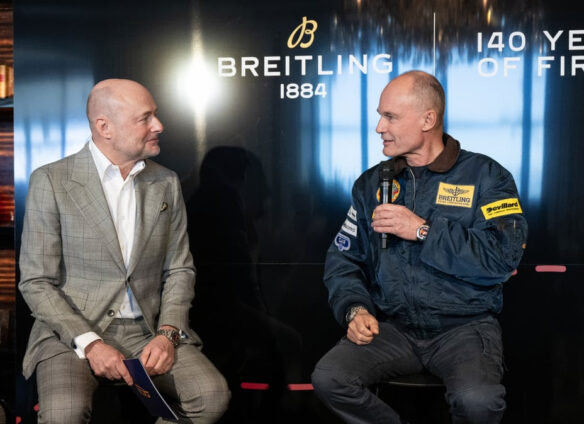Tokyo (SCCIJ) – Almost 50 chamber members and guests attended the April Luncheon about success strategies for diverse teams in Japan. Speakers Mr. Axel Wellbrock, Founder & Representative Director of Kay Group, and Ms. Karin Wellbrock, Co-Founder & Partner of Kay Group, explained their coaching approaches to foster team facilitation and improve their performance. We summarize their talk in Q&A form.
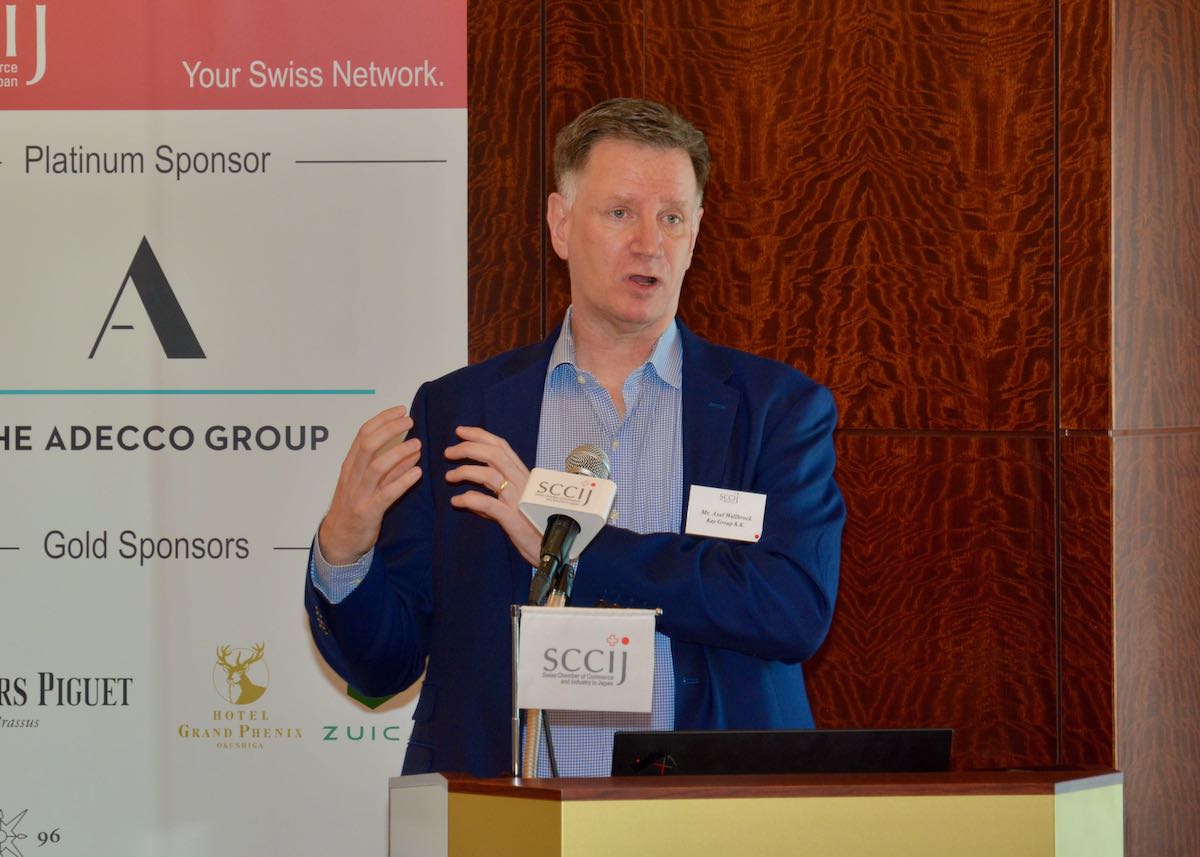
SCCIJ April Luncheon speaker Mr. Axel Wellbrock of Kay Group.
Nowadays everybody talks about the necessity of more diversity in companies to achieve a higher performance. What is your view of this discussion?
Mr. Axel Wellbrock: We would like to reframe the term diversity. Usually, we think of multicultural background, age, gender, functional expertise, etc. as diversity and these categories can quickly become mental silos. We aim to bridge these mental silos to integrate everybody into a team.
Ms. Karin Wellbrock: Managing teams in subsidiaries in Japan is challenging due to homogeneity and resistance to change. These factors hinder the integration of diverse aspects such as beliefs, and experiences, among others. We foster this integration through our methods.
How important is the leader for team building?
A. Wellbrock: At the start of team development, we have a collection of individuals with diverse mental models, interests, and skills. They don’t know yet how to collaborate and co-create. As the alignment of this diversity does not happen automatically, it depends on the capabilities of the leader to transform this group of individuals into a high-performing team.
K. Wellbrock: Before a team comes into being, the participants often do not know why they are there. One reason is that they are often delegated to the group because of their corporate function. To achieve high performance, however, you need to create a common understanding, a shared alignment, and finally, a commitment to what each member will contribute to the team’s purpose.
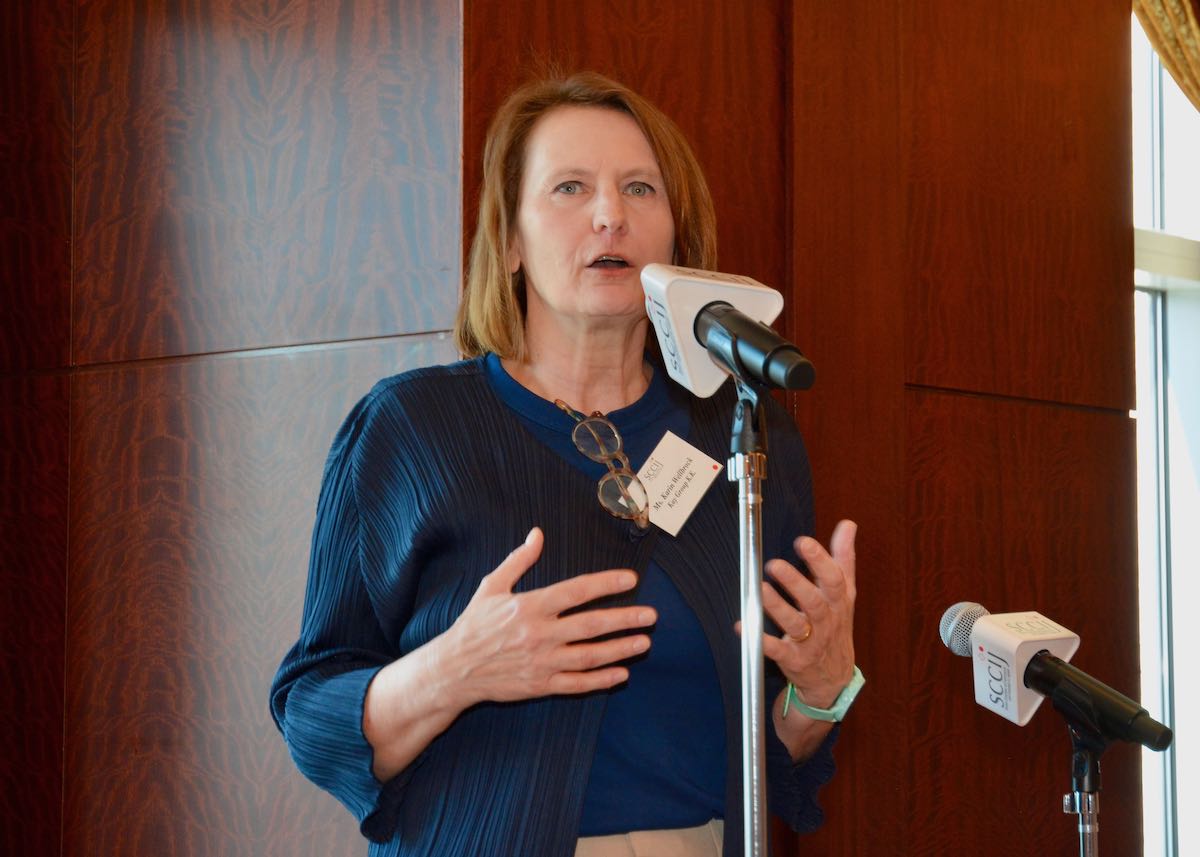
SCCIJ April Luncheon speaker Ms. Karin Wellbrock of Kay Group.
What are your methods to develop a group into a team?
A. Wellbrock: We use the “facilitation by dialogue visualization” method by Metaplan Consulting from Germany. We don’t train the team because training usually covers only the skill level of the participants. This is where coaching comes in and we do that in two ways. Firstly, we focus on the mindset of each person for alignment within the team context. Secondly, we emphasize different roles individuals take as part of the team dynamics.
K. Wellbrock: Ideally, you have diversity in the distinct roles you need for the team. We use a model called Belbin Team roles which helps people identify someone’s natural role taken in a group or team. There a three particular types of team roles. You have the socially-oriented roles to bring the team together, you have the thinking-related roles for problem-solving, and finally, you have the action-oriented roles that execute the decisions. The type of roles you should have in your team depends on the purpose of the team. These roles usually go hand-in-hand with different working styles and represent the diversity that we align during the team building and storming phase.
What kind of methods are you using in your coaching?
A. Wellbrock: Our approach is based on the Tuckman team development model. After an initial formation, the members have to go through a storming phase where differences between team members are revealed and then aligned. This is the key prerequisite for the later high performance. With this goal in mind, we deliberately create psychological safety and transparency, to not only disclose but explore in a frank and open manner each other’s differences related to the team’s purpose and goals. With our dialogue visualization techniques, we are able to engage all members, even quieter and reserved ones.
K. Wellbrock: The idea is to provide an entry point and a jump off base for a discussion. We help teams to go beyond the “rational” discussion about purpose and goals by using coaching approaches that tap into the “preconscious” mindset level of the members. To capture the dynamics of the discussion we deploy dialogue visualization and simulation exercises for different collaboration situations.
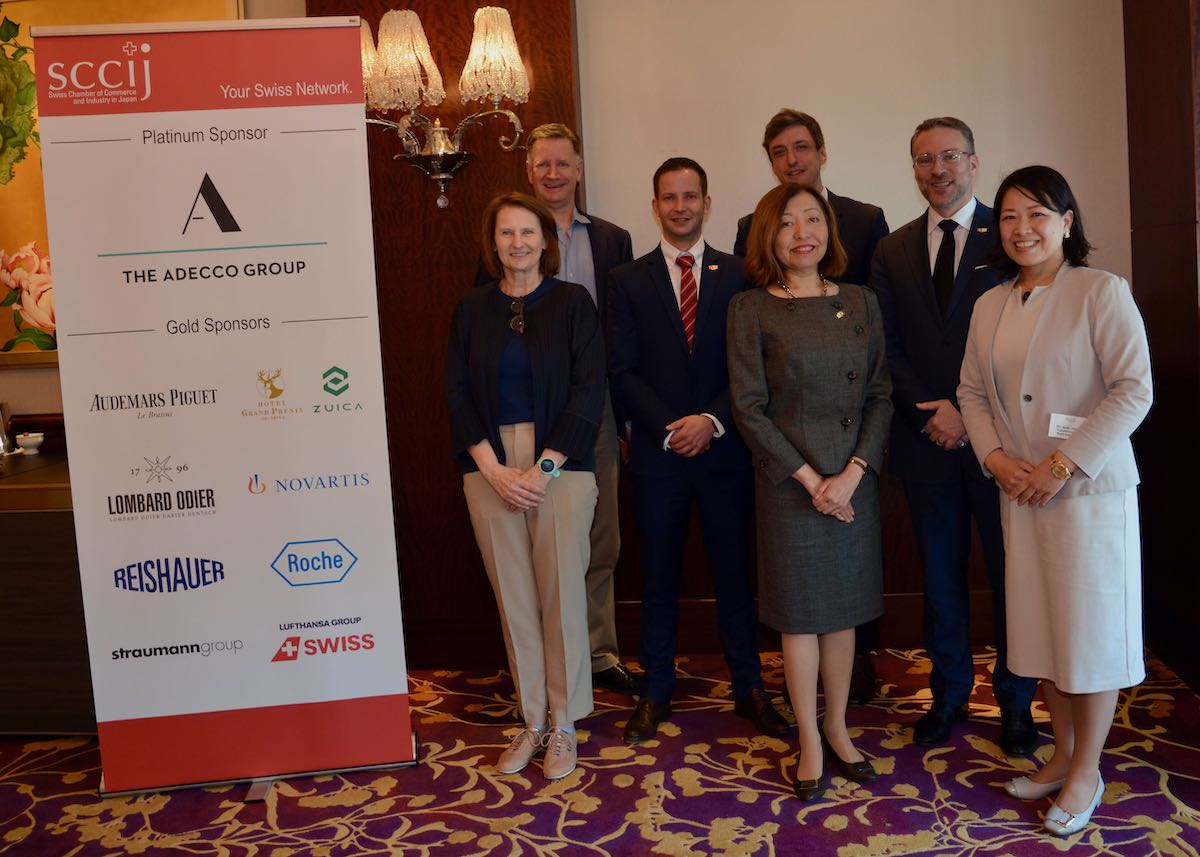
Members and advisors of the SCCIJ with April Luncheon speakers Ms. K. Wellbrock and Mr. A. Wellbrock of Kay Group.
What do you mean by targeting the preconscious mindset?
A. Wellbrock: The preconsciousness describes the mindset between consciousness and subconsciousness. Here, the mindset has not yet formed fixed patterns and tends to be more malleable. While we help leaders and team members to discover the driving forces and thinking patterns in the preconsciousness, we can highlight the differences between their mental models and initiate alignment on common goals.
K. Wellbrock: With this approach, we can also uncover hidden, preconscious assumptions within each member that can be related to the other team members and the purpose or goals of the team. Unspoken assumptions can potentially lead to team conflicts and thanks to the visualization, the members can address these potential hotspots early on.
Can you give some specific examples of how you achieve this?
A. Wellbrock: We are working not only with large and mid-sized foreign companies in Japan but also Japanese companies. We shape group dynamics with experimental learning tools. For instance, to achieve common understanding in a team, we ask the members to disclose more about their thoughts and feelings, hence their mental models, by using pictures that represent different situations at work. Also, we provide opportunities to voice thoughts and feelings anonymously with a variety of polling tools.
K. Wellbrock: To create alignment and commitment in teams, we capture these disclosed thoughts and feelings on note cards and put them up on a wall, visible to everyone. This allows us to dig deeper into each statement with coaching questions, and cluster the statements according to commonalities. As the last step, we facilitate a discussion on committed action plans based on the clustered statements.
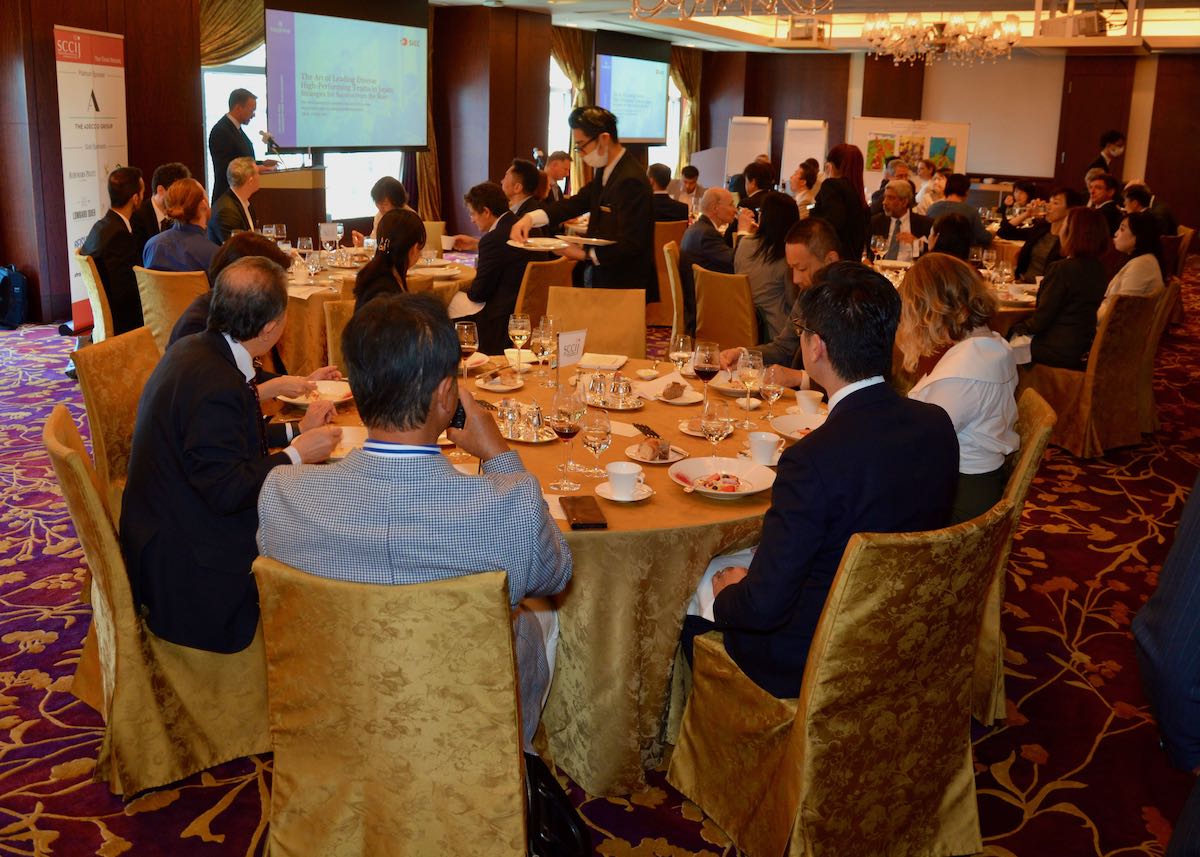
The SCCIJ April Luncheon was fully booked.
Biographies of the speakers
Mr. Axel Wellbrock is the Founder and Representative Director of Kay Group. With over 35 years of industry experience as well as in executive coaching and team development, Mr. Wellbrock has become an expert in guiding leaders through challenging situations and enhancing their ability to work together as a team. He held executive positions with top-tier pharmaceutical companies, such as AstraZeneca, Eli Lilly, Bayer, and Boehringer, in Europe, North America, and Asia.
Ms. Karin Wellbrock is the Co-Founder and Partner of Kay Group. With nearly three decades of experience in international consulting and coaching, she has become a respected figure in the field of leadership development. While advancing women into leadership positions, she conducts her research-based programs to cultivate champions and sponsors. Now based in Tokyo, she partners with executives and their teams to build impactful organizations. When Ms. Wellbrock is not working with corporate clients, she mentors NGO and start-up leaders mainly in Asia and Africa.
Text and photos: Martin Fritz for SCCIJ



